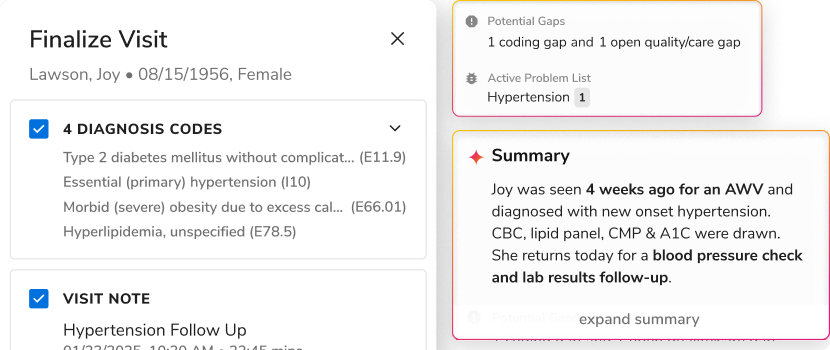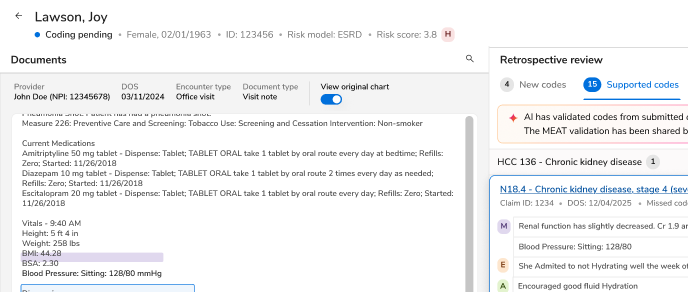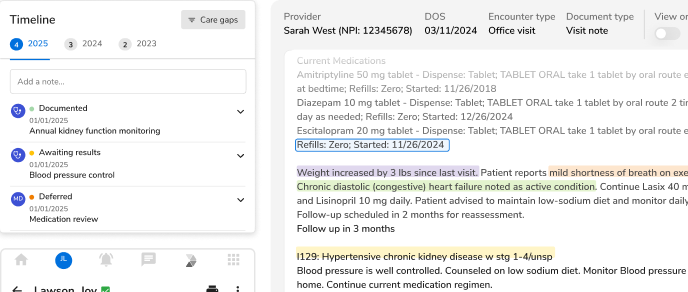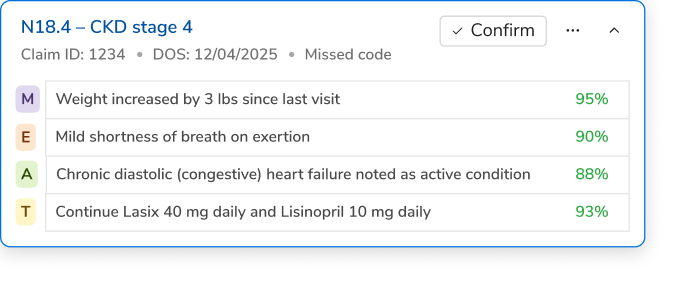Innovaccer’s Gravity: The Enterprise Intelligence Layer Healthcare Needs


Healthcare organizations have overwhelming amounts of data, but it’s fragmented. The clinical information stays in the EHR, the claims data lives in the payer systems, and the population health tools can't integrate with care management workflows. Each of these systems functions in isolation from the others, each creating a very complicated web of integrations that delay innovation and frustrate teams.
Today, Healthcare leaders recognize that AI is no longer optional. It’s essential for competitive advantage. Yet simply installing AI is not enough. Most AI initiatives stumble before scaling, largely due to data fragmentation and poor integration. To make AI work, health care needs a shared foundation that brings together every source of data, orchestrates intelligence, and drives innovation across the organization.
That’s where Innovaccer’s Gravity comes in. Gravity acts as the enterprise intelligence layer that brings together all data: clinical, operational, financial, and administrative - from across the health system into one governed, AI-ready fabric. It is the infrastructure that converts data into intelligence.
What C-Suite Leaders Want from Technology
According to the KLAS Executive Voices 2025 report, healthcare executives are realigning their technology strategies around three shared imperatives: financial predictability, organizational alignment, and data usability.
While each executive role brings unique concerns, the themes are remarkably consistent:
CEOs desire technology that has a direct connection to enterprise outcomes like growth, efficiency, and clinician retention, without added complexity. They are becoming more cautious of overengineered solutions and prefer vendors who can demonstrate measurable value in clear terms.
CFOs want price transparency with cost to value alignment. They are put off by hidden fees and bundled, rigid pricing, and favor tools that will allow for multiyear financial modeling and modular adoption as opposed to all or nothing commitments.
CIOs and CDOs seek data liquidity and architectural simplicity. They favor platforms that unify data pipelines, reduce duplication, and enable self-service analytics: hallmarks of a mature intelligence layer.
COOs and CMIOs emphasize workflow visibility and cross-departmental coordination. They need real-time operational insight and standardized reporting across clinical and administrative functions.
CTOs are concerned with building scalable, open, and interoperable environments that can evolve with the enterprise while CISOs are responsible for safeguarding patient data without hindering innovation.
The common thread is that every executive values integration that is strategic and technology that unifies perspectives, reduces friction, and accelerates results.
Gravity: The Foundation for Systemwide Intelligence
Gravity effectively organizes data at its simplest form, allowing every stakeholder, from the CEO to the data engineer, to have consistent, contextualized and trusted data. Its infrastructure is centered around four key pillars:
1. Unified Data Fabric
Gravity ties together clinical, operational and financial data into a single governed data fabric, eliminating the need for separate data warehouses, manual stitching and redundant pipelines. With over 400 prebuilt connectors and 100+ FHIR resources, it rapidly unites EHRs, RCM, ERP, CRM and population health platforms.
The outcome: a single source of truth that establishes enterprise analytics, AI, and automation—all fueled by the same real-time, standardized data.
2. AI-Ready Data Models
AI in healthcare has struggled not due to algorithms; rather, it has struggled due to data readiness. Gravity’s AI models are constructed on health specificities that validate, enrich, and structure data for intelligent use. Whether building predictive models to reduce hospital readmissions or automating revenue cycle activities, Gravity provides clean and semantically rich data sets that allow for reduced time to deployment and greater model accuracy.
3. Self-Service Innovation
Healthcare requires agility. Gravity's powerful, low-code/no-code workbenches, including a data workbench, analytics workbench, and an agent builder, allow internal teams to create custom reports, AI agents and dashboards with no vendor lock-in. Data analysts can explore data, data engineers can orchestrate pipelines, and developers can think creatively against time constraints - all within a governed and unified ecosystem.
4. Governance, Security, and Control
Trust cannot be negotiated in healthcare. Gravity's enterprise architecture guarantees all the security required to accomplish HIPAA/HITRUST compliance, while providing organizations with complete ownership and control of their data. Gravity is cloud agnostic, enabling organizations to deploy it in ways that work with their existing infrastructure using AWS, Azure, Snowflake or Databricks, so organizations are empowered strategically without losing control of data.
Intelligence in Action
Turning Data into Decisions
The beauty of Gravity’s intelligence layer is in its compounding effect. Once data is unified, every new initiative, whether it’s AI, analytics, or automation, builds upon that foundation. Over time, the organization becomes smarter, faster, and more resilient, with insights that grow in value instead of complexity.
By establishing a single, intelligent foundation, Gravity enables use cases that were previously fragmented across departments:
Systemwide performance analytics: CEOs gain converged visibility across clinical, operational, and financial domains, linking AI insights directly to business outcomes.
Revenue optimization and cost control: CFOs use unified data to drive automation in prior authorization, denial management, and 340B optimization, improving margins while reducing manual workload.
Operational efficiency: COOs and operations leaders monitor throughput, capacity, and workforce allocation in real time, improving patient flow and resource utilization.
Data-driven care delivery: CMIOs and clinicians access actionable insights embedded into workflows, reducing cognitive burden and improving patient outcomes.
Secure, flexible, and compliant infrastructure: CISOs and CTOs maintain full data ownership while leveraging cloud-agnostic deployment to meet strategic and regulatory goals effortlessly.
Agents and Business Transformation
Gravity's intelligence layer is much more than a technology framework; it is a new way of thinking about healthcare organizations and how they operate and evolve.
The AI-powered agents in the Gravity layer are built to operate across a unified, highly curated dataset, automating routine and repetitive processes so that teams can focus on higher-value priorities. Whether it is managing the prior authorization process, forecasting capacity, or surfacing clinical recommendations, these agents are applying intelligence where it matters most - in the workflows that drive care, cost, and efficiency.
However, the true power of Gravity goes beyond automation. It enables enterprise transformation by embedding intelligence into the very fabric of healthcare operations. Interoperability becomes effortless, data moves seamlessly, and innovation is no longer restricted to specialized pockets of the organization.
Gravity delivers a shared foundation that enables every stakeholder in healthcare - health systems, payers, life sciences, and technological innovators - to build and scale solutions with shared intelligence. Each dataset becomes ready for AI, each workflow becomes enabled with intelligence, and the organization begins to advance to an AI-first enterprise.
The Future of Healthcare Runs on Intelligence
The coming era of healthcare will be characterized by organizations that leverage data intelligently. As AI and automation reshape the industry, the health systems that thrive will be those that have cultivated a strong, unified foundation that connects data, people, and decisions effortlessly.
Innovaccer’s Gravity is that foundation. It's the enterprise intelligence layer that healthcare has been waiting for: a platform that turns data fragmentation into strategic alignment and data overload into wisdom that can inform action.
Because when every system connects to the same layer of truth, the entire organization moves forward together. Try Gravity, book a demo now.

.png)





.png)









.svg)
.svg)

.svg)

